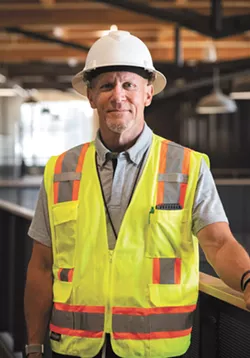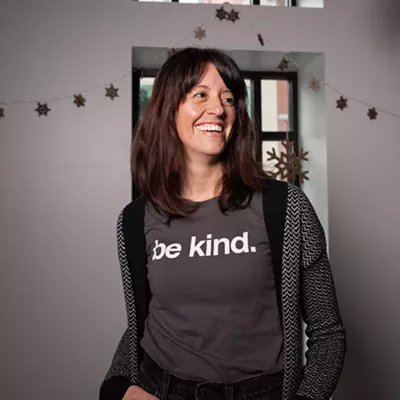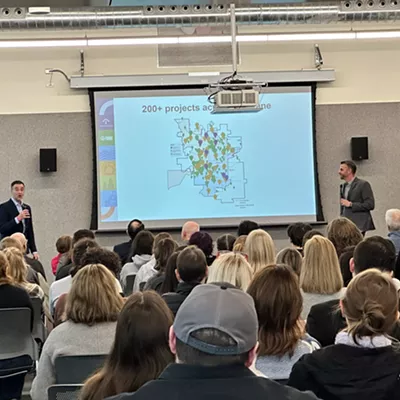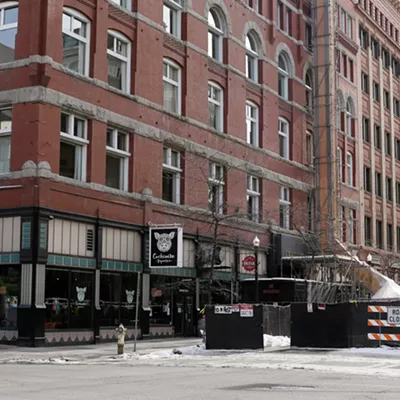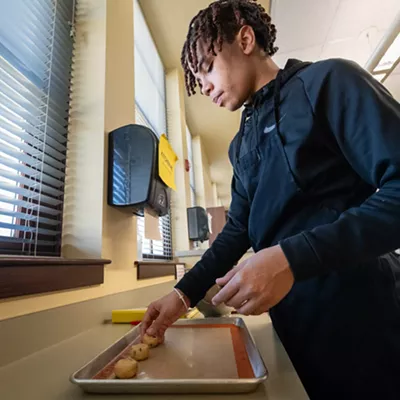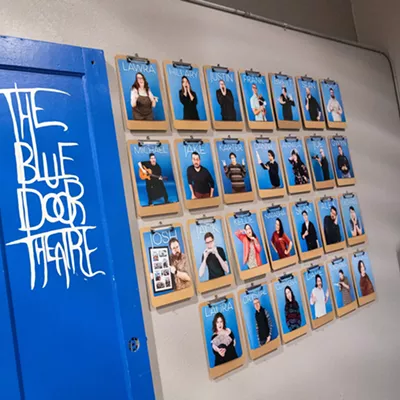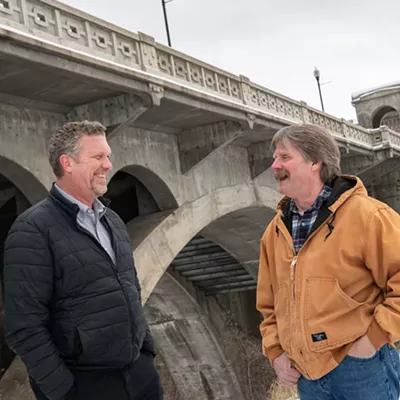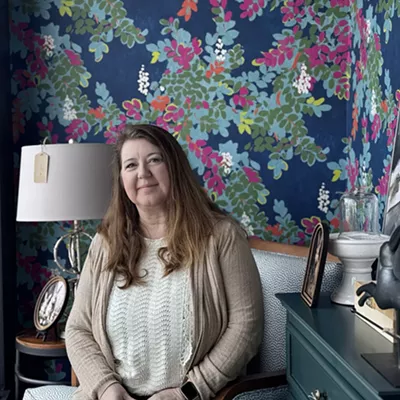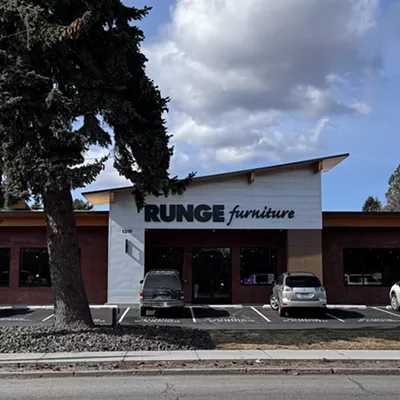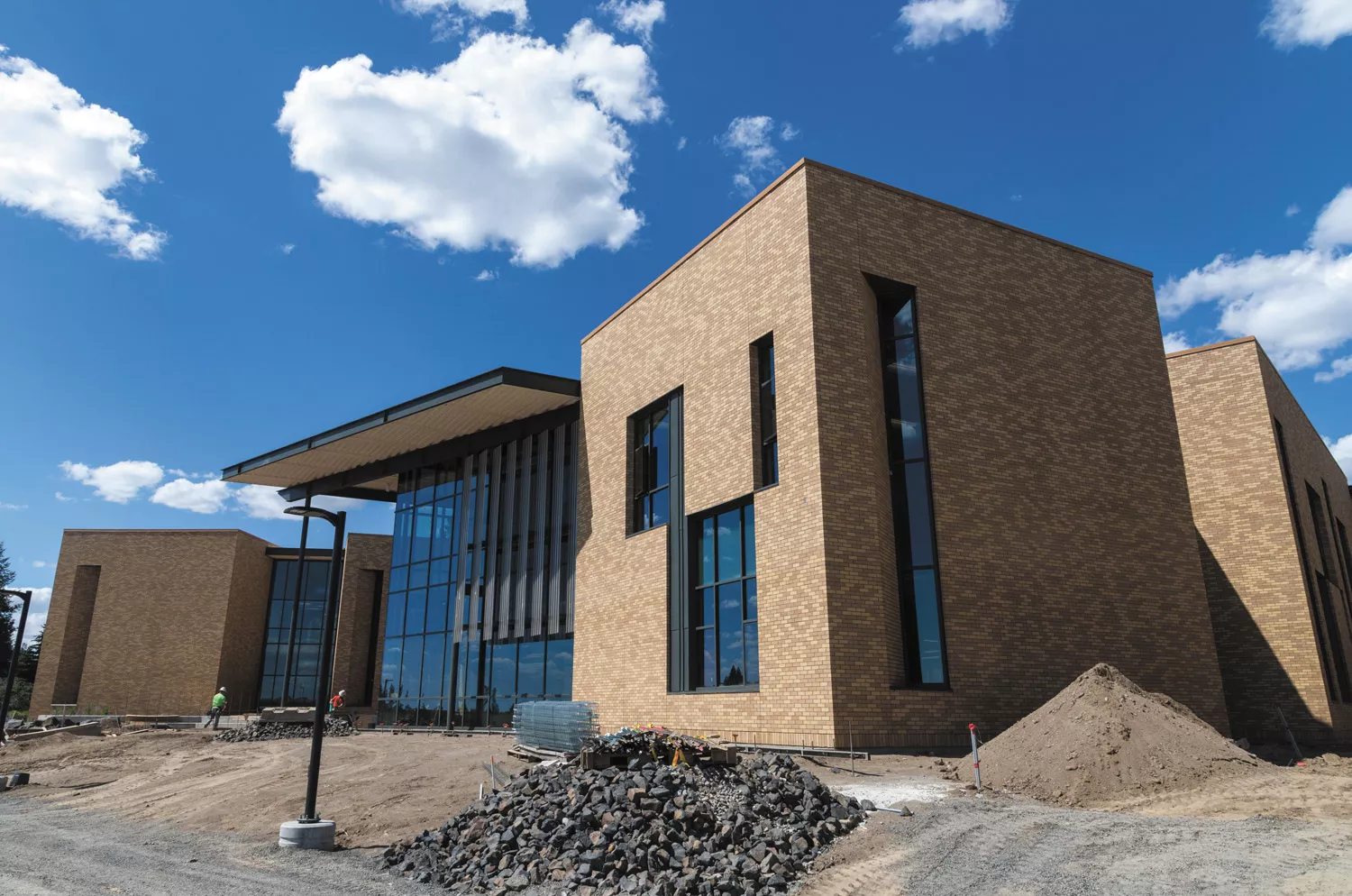
Greg Forsyth is eager to talk about the new Carla Peperzak Middle School. It's mid-July, and the site is abuzz with workers both inside and out. The school's Palouse-inspired golden brick design can catch visitors off-guard as it seamlessly emerges from the landscape just off 63rd and Regal on the South Hill. There's still plenty that needs to be done outside; inside, bundles of wiring are still visible. Floors have yet to be laid. Roughed in plywood surfaces are plentiful. Nonetheless, an open design flooded with natural light featuring breathtaking views from all those windows is taking shape.
With the school set to open in weeks, Forsyth, the district's director of capital projects, is standing in the unfinished entry space, wearing the still-mandatory hard hat and fluorescent yellow vest. He is calm, smiling even.
"As we say, the students will come, we will be open and education will happen."
Forsyth's steady demeanor is perhaps a bit surprising: He's overseeing not just the construction at Peperzak, but also the brand new Sacajawea Middle School that is rapidly rising behind its freshly demolished old building, also on track to open in a few weeks. Then there are the two schools currently in the design phase. And the construction of downtown's new ONE Spokane stadium is also scheduled to open later this fall. Oh, and about $6 million of seasonal work is also underway.
For Forsyth, the projects are a reflection not only of thoughtful design and careful workmanship, but also, taken as a whole, an expression of the district's commitment to students. How education happens in these new schools is something he's steadfastly worked to advance.
Forsyth wasn't always in the construction business. After attending WSU, he started his career as a math teacher at Lewis and Clark, but after six years he left to work with his wife's family business. Fifteen years later, he returned to education, teaching at Rogers, a high school with ample family connections. His dad graduated from Rogers and taught there — the baseball field is even named after him. Later, Forsyth's daughter also taught at Rogers, marking three generations.
After voters passed a school bond in 2003, as a Rogers teacher Forsyth got involved in the design of the school's new building. That ultimately led to his role as director of capital projects.
"Every day, people ask me, 'How did you end up doing this?' I can't answer it," he says. "I feel fortunate. I feel I get to work with great people that care about student learning, student success and relationships, [who] worry about kids, worry about families. And we look for opportunities to make those things better."
Though he's reticent to talk about himself — he likes to spend time with family, takes part in competitive walking and facilitates a few classes at church — he is laser-focused when describing the collaborative process involved in the construction of school buildings. Teachers, district administrators, design teams — Integrus architecture at Peperzak — and parents all contributed ideas to the project plans. There's one other group he wanted to reach out to for help with middle schools: the students.
"We spoke to kids. We asked them some questions. 'Do you like to play?' 'Yes, we do.' They're 12 years old, right? They still want to play. Now they don't want to play necessarily on some of the toys that they played on at five years old. So they look a little different."
Thus, a playground, notable for its extra-springy surface and rugged, larger-scale equipment, rises up right in front of Peperzak.
Then he says they asked current middle schoolers: "'What in this school is yours?'" The only thing kids could come up with was their backpacks.
That was a problem. "We needed to create some ownership, and we want them to love and grow in this school. So you'll see kid-centered areas within this building that allow kids to gather in groups and build relationships — with adults and with each other."
For example, the "nutrition commons" opens onto a sensory courtyard. "It's for some of our special needs students — and for every student— but it was built with those students in mind. We want everyone to have learning spaces and everyone to have adaptable learning. And so this is something that's been built into the last four of our middle schools. I'm really proud of it. I think it shows our outreach and our growth in understanding and learning."
Nearby is the "learning stair," where students can sit for lunch. "They'll be able to eat on that stair — which if you know kids, they like to sit on the floor." Then it's an easy stroll to the library – now called a "learning commons."
"So our libraries are a little different now," says Forsyth. "They don't have any walls." There's also no checkout counter. It's on the honor system. "If someone takes a book, I guarantee we're okay with that," says Forsyth, noting the library, which will have about 7,000 books, is also in a partnership with Spokane Public Libraries, offering access to many thousands of books.
Choir and band rooms, career tech education spaces, a woodshop and maker space all feature interior windows so kids passing by might be inspired to give these new things a whirl.
"We want our middle schoolers to experience all different aspects of learning," says Forsyth, "so when they go to high school, they'll be aware of more choices."
As tradesmen and women quietly go about their work in the building, Forsyth reflects: "One of the things that I'm really excited about is we've worked with these contractors for 20 years, and I've seen people go from carpenter to carpenter foreman to superintendents... We hire very qualified people. We expect excellence, and they are.
"These buildings are a compilation of a lot of people's efforts and a lot of good ideas, a lot of different thought processes," he continues. "I enjoy the fact that I understand how schools work. And I've been able to experience that on multiple levels along the way."

